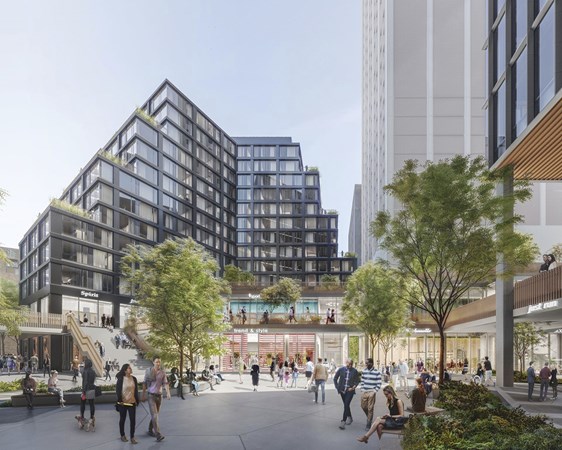Top 4 Things to Know About Detroit’s Office Market
Colliers Executive Vice President John Fricke touches on the challenges, top amenities, market performance and 2019 trends in the Midwestern metro.

John Fricke, Executive Vice President, Colliers International (Image courtesy of Colliers International)
Detroit’s office market closed 2018 on a strong note, marking a peak for this stage of the city’s revival. More than 3 million square feet of space changed hands in the metro’s submarkets, according to Yardi Matrix data, pointing to a real investment buzz that was partly spurred by players in the auto industry. Last summer, Ford bought the abandoned Michigan Central Station and announced a three-phase, $740 million renovation plan, which started at the end of the year. Two months later, GM confirmed that it is bringing Cadillac closer to its Warren, Mich., technical center, a move that is expected to finalize this year.
The cranes that have been rising against the skyline since Quicken Loans’ Dan Gilbert launched his plan to revitalize the city’s downtown ten years ago, are here to stay. Several adaptive reuse projects involving iconic buildings such as Book Tower, the Sanders Building, the Grinnell Building and the Free Press Building are ongoing. Construction is also underway at the former Marquette Building across from Cobo Center, which is projected to bring more than 150,000 square feet of office space to Detroit’s downtown.
But it’s not only adaptive reuse projects that have been flourishing. New developments have also been launched. In December alone, developers announced two major projects in the city’s downtown. Bedrock broke ground on an $820 million mixed-use project—Monroe Blocks—expected to bring more than 800,000 square feet of office space to the downtown area as well as 480 residential units, 117,000 square feet of retail space and 1.5 acres of public open space. Around the same time, The City of Warren selected Flaherty & Collins as the developer for Warren Town Center, a $170 million mixed-use project that is scheduled to break ground in 2019.
An insider’s view
While development activity is concentrated in the city’s downtown area, where office demand is high, the suburbs are left with larger blocks of space to fill out, which can be problematic, according to John Fricke, executive vice president with Colliers International. Fricke shares his view of the Detroit office market in the four responses below, touching on challenges, top amenities, market performance and 2019 trends.
What have been the main challenges that Detroit office investors had to overcome this year?
Fricke: Moderate office demand in the suburbs and rising tenant improvement costs. I would also add that demand for office space in the city of Detroit has been great for investors targeting urban submarkets but problematic for suburban office investors as a growing number of tenants migrate to the city and leave behind more suburban space.
What has been on top of tenants’ preferences in terms of amenities and location in 2018?
Fricke: Technology infrastructure. In other words, the highest-speed internet possible and common areas providing free Wi-Fi. Secondarily, I would say security and the existence of food service and fitness facilities on site. For locations, Detroit was in very high demand as were other urban/walkable districts like Birmingham and Royal Oak.
On a scale from 1 to 10, what grade would you give the Detroit office market in 2018 and why?
Fricke: I’d say a solid 7 or 8. There was almost 2 million feet of absorption and the overall vacancy level fell below 10 percent for the first time in over a decade due to about seven or eight years in a row of net positive absorption.
What are the trends to watch in 2019?
Fricke: First of all, it’s the level of continued migration to Detroit given rapidly rising rents and parking costs in the city. Then there’s tenant improvement construction costs, which have reached the highest level, and the impact on tenants’ willingness to relocate as well as on construction in general.








You must be logged in to post a comment.